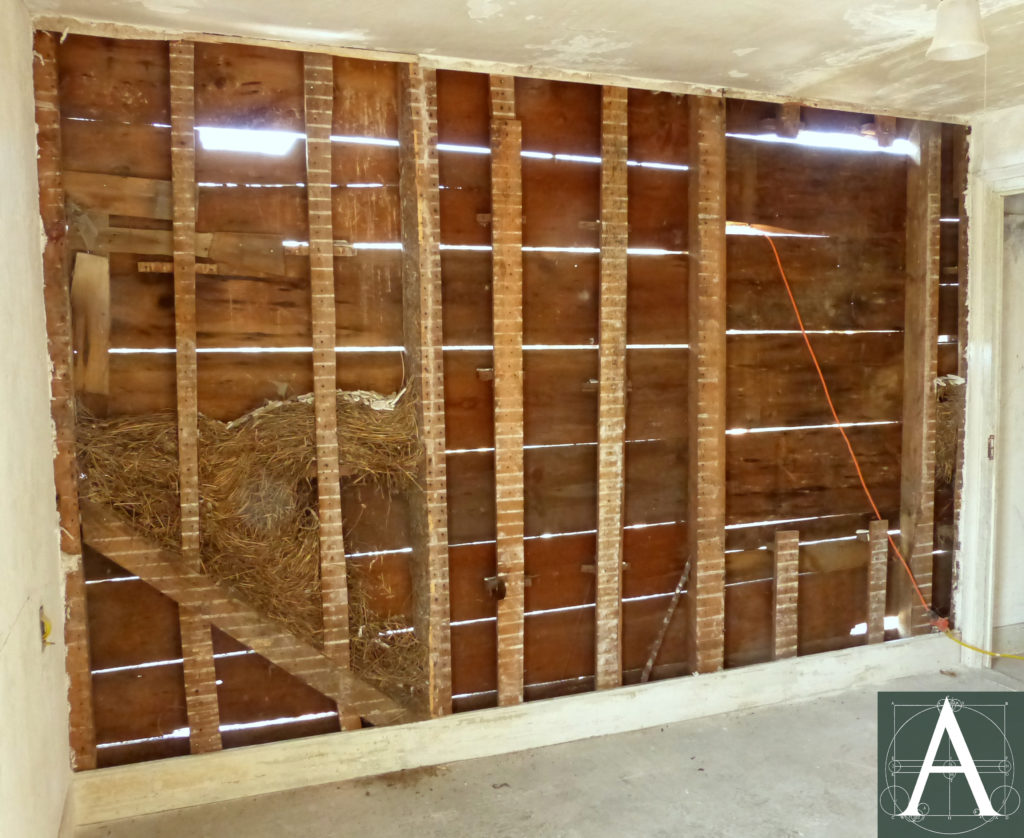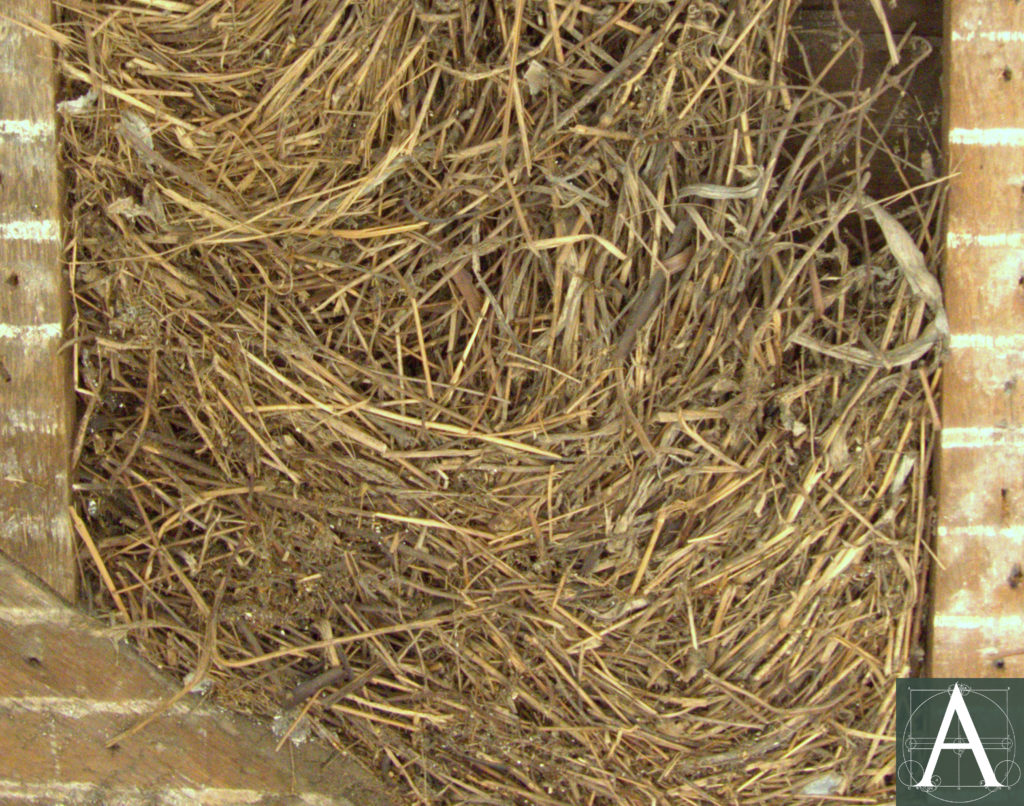Little known today as an architectural material, and rarely documented – or perhaps not noticed – in New England buildings, eelgrass has an ancient history of architectural uses dating back at least to the Middle Ages, when it was used for thatching on the island of Læsø in Denmark and in Scotland. In North America, Native Americans ate eelgrass rhizomes as food and used the upper parts of the plants for smoking meats.
European settlers used eelgrass as building insulation because it possesses several desirable qualities:
- At the time of European settlement, it was plentiful and easily gathered along shorelines.
- When dried, eelgrass is light for its volume and easily packed into wall cavities.
- Eelgrass is fire and rot resistant.
- When packed into a wall, eelgrass tends to form many small air pockets and to retain its loft, rather than sinking within the wall cavity.
At least one First Period house, the Pierce House of 1683 in Dorchester, Massachusetts, had eelgrass insulation. As late as 1834, eelgrass insulation was installed as wall insulation in the Nicholson-Andrews House on Nantucket. It seems probable that a great many more examples exist along coastal New England, but few have been documented in public archives, or, perhaps, the material has not been noted by modern builders and historians except as an oddity.

Exposed framing at the rear wall of the Nicholson-Andrews House, Nantucket showing fragmentary remains of eelgrass insulation set between studs
The continued value of eelgrass is represented by an 1891 patent obtained by Samuel Cabot, Inc. to manufacture of Cabot’s Quilt, a thermal and sound insulator made of eelgrass pressed between two layers of Kraft paper. Manufactured in varying thicknesses, the material became sufficiently popular that the Cabot Company began to purchase bales of eelgrass from Nova Scotia in 1907 to supplement its New England suppliers and eventually purchased land there in 1914 to establish storage sheds and a steady source of the material.
In 1930-31, a major wasting disease destroyed 90% of the eelgrass beds in North America and Europe. Some recovery of the plants occurred in the 1930s during which time, the Cabot Company attempted to supplement its Nova Scotia and New England supplies with purchases from Germany, but the outbreak of World War II eliminated an important source of the material and interfered with shipping. A late use of Cabot’s Quilt has been observed at the Walter Gropius House, 1938, in Lincoln MA during repairs undertaken in 1996.
In 1942, the Cabot Company abandoned manufacture of Cabot’s Quilt, a decision that was followed much later, by its Canadian successor, Guildford’s which manufactured “Seafelt” from 1953 until the 1960s when it turned its production over to fiberglass insulation. The desirable properties of eelgrass still attract some interest, and in 1977 a patent was taken on a pulverized preparation of eelgrass that could be sprayed onto structures both as a flame-retardant, soundproofing and insulation. To date, this product has not been offered commercially.
Click here if you have information about documented uses of eelgrass in New England buildings.
Sources:
Gabby, Brent. Bauhaus: Leakage Problems at a Modernist Landmark. Old House Journal, Vol. 31, no. 3 (May/June 2003): 70-75.
Guildford’s Group of Companies. Company History: http://www.guildfordsgroup.com/our-history.html
Historic New England. Pierce House: http://www.historicnewengland.org/historic-properties/homes/pierce-house/photographic-tour/Eel%20grass%20insulation/view
Historic New England. Gropius House: http://www.historicnewengland.org/historic-properties/homes/Gropius%20House
Internet Archives: Cabot’s Insulating Quilt Trade Brochures, 1923 & 1928: https://archive.org/search.php?query=Cabot%27s%20quilt
Samuel Cabot, Inc. Build Warm Houses with Cabot’s Quilts. 1928. https://ia801407.us.archive.org/31/items/BuildWarmHousesWithCabotsQuilt/CabotsCca65090.pdf
Society for the Protection of Ancient Buildings (SPAB). The SPAB Magazine. (Summer 2016): 5.
United States Patent US4016084 A. https://www.google.com/patents/US4016084
Wyllie-Echeverria, Sandy and Cox, Paul Alan. “The Seagrass (Zostera Marina [Zosteraceae]) Industry of Nova Scotia (1907-1960).” Economic Botany, Vol 53 (1999): 419-426:

